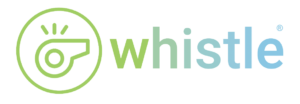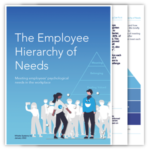No One is Immune to Employee Burnout — Not Even HR
Common Signs, Ways to Prevent It & the Impact on Workers and Companies
Burnout is defined by Merriam-Webster as exhaustion of physical or emotional motivation usually as a result of prolonged stress or frustration — and pretty much describes our collective experience living through a pandemic the last two-and-a-half years.
Workers tend to experience professional burnout from extensive demands and difficulty keeping up with their duties. If workers continue to work despite feelings of physical exhaustion, burnout will negatively impact their performance.
Employee burnout can sneak up on even the most ambitious people — making it a condition that today’s leaders and business executives need to take seriously.
Some common signs of employee burnout include low energy, decreases in productivity and performance, and resentment towards work. It can affect anyone, in any position, in any industry.
Human Resources professionals are no exception to employee burnout. In fact, 98% of HR leaders are burned out according to an April 2022 survey covered by Forbes.
Following the pandemic, HR professionals have experienced new challenges with hiring and retaining a competent workforce in addition to increasing employee demands in today’s labor market. These are just a couple reasons why employee burnout is becoming a serious problem for the HR industry.
Common Signs of Employee Burnout
Employee burnout should always be a concern for companies, but the pandemic caused drastic shifts in the way people live and work that make it impossible to ignore.
Employee burnout is usually triggered by an overflow of responsibilities, a lack of social interaction, and feeling unfulfilled. These issues tend to start small and snowball over time, making burnout extremely difficult to manage unless you learn to spot the warning signs and take proactive action.
Common signs of employee burnout include:
- low energy
- decreases in productivity and performance
- resentment towards work
- increased feelings of negativity on the job
- struggle to focus or concentrate
At work, burnout hits people harder who:
- experience increased job demands with unrealistic expectations, or
- engage in boring work routines that lack interaction and engagement.
Companies must be aware of these signs and look out for potential cues that suggest an employee — or an entire team (ahem, HR!) — is experiencing burnout.
Ways to Prevent Employee Burnout
It’s possible to prevent employee burnout with realistic job responsibilities, a healthy work culture, and open communication. But, let’s face it, most companies today would report they already have all of this and are still negatively rocked by employee burnout.
It takes a serious group of leaders who are willing to listen and then make drastic changes to reduce burnout. Here’s where to start.
Prevention is the optimal solution for employee burnout.
Managing personal wellness and stress levels helps to improve productivity. Many companies have wellness programs in place, but most of them tend to operate like another checklist of tasks or generalized targets to hit… usually designed to save the company big bucks. Explore ways to encourage healthier habits that are meaningful to the individual, and then gamify participation.
This starts with having well-trained leaders and people managers who know how to manage human beings.
Communication is another effective tool for preventing employee burnout.
Having regular conversations with senior employees or co-workers about day-to-day work experiences can ease feelings of stress and promote positive interactions. Transparent communication across a company helps all team members stay on the same page and synchronize workflows. Then, when an employee is dealing with burnout, companies can provide resources or support to nurture them back into position.
This starts with having strong leaders who can empathize with individuals while maintaining clear priorities and expectations for productivity.
Accurate job descriptions with realistic expectations also prevent employee burnout.
Given the current job market, it’s common for current employees to take on extra responsibilities when a co-worker quits — just ask any teacher, nurse, or factory worker. This mismatch of roles and responsibilities has long been a criticism of capitalism and out-of-touch leadership, so this isn’t just another HR Department responsibility to sort out. People leaders should have serious conversations about priorities and then get real on job responsibilities to expose the gaps.
This starts with strong leadership willing to acknowledge things are changing.
A better employee experience leads to reduced employee burnout, too.
The employee experience begins before someone even applies. From the interview process and employee onboarding to leadership training and professional development, the experience companies create for employees is a huge factor in overall company culture. Companies will spend millions on the customer experience to get it just right, so perhaps it’s time to address the employee experience.
This starts with strong HR leaders who have C-suite support to re-invent people programs that actually benefit the people.
Working in fields like manufacturing and healthcare can be extremely fulfilling, but the burnout workers face can halt that expectation.
Impact of Employee Burnout on Workers and Companies
There is research being done in spades to examine the root cause of burnout and ways to prevent it, but statistics don’t lie. The pandemic definitely accelerated specific issues, but the topic is far too complex to blame on just one or two factors.
Take a look at how burnout is impacting different workers and industries:
- 84% of millennial workers have reported experiencing burnout in their current roles. Professionals in industries such as healthcare, manufacturing, and hospitality experience extreme burnout as they face unique demands that require more work from employees.
- Healthcare professionals face long hours combined with extensive processes and paperwork that make it difficult to manage personal wellness. Healthcare worker burnout causes severe risks like medical errors, staff shortages, and a decreased amount of time spent with patients.
- Manufacturing workers experience employee burnout at higher levels and are more likely to leave their jobs. These workers can’t work from home and thus experienced heightened fears of Covid-19 outbreaks in their communities. The pay for these positions is low, conditions are harsh, and there are better jobs at retail stores and restaurants with more control over schedules.
- In the hospitality industry, 61% of employees experience burnout from random guest surges, unpredictable hours, and unpleasant interactions with customers. This field has a long history of high burnout rates and being treated as “replaceable” by employers.
- 98% of HR leaders are burned out according to an April 2022 survey. HR departments are taking on the brunt of the workforce-related issues brought on by the pandemic and increasing worker burnout, which is creating additional work amidst a staffing shortage of their own. While HR is responsible for taking care of its company’s people, HR professionals aren’t immune to burnout themselves.
Sadly, these problems don’t appear to be going away. Some even predict that The Great Resignation might spark the Great Burnout and cripple the American workforce. People are still willing to work; they just are looking for something better and finding it.
Conclusion
As we’ve seen and read (a lot), employee burnout is real and it’s not going to vanish overnight. For the majority of employees, work is manageable and a healthy work-life balance is attainable. For workers experiencing burnout, it’s hard to regain motivation, which is why holistic wellness programs are vital for all employees.
Here at Whistle, we’ve had the opportunity to work with HR leaders at companies hit harder by what’s going on in the current job market. Together we’ve not only designed effective people programs to address real issues but also provide a scalable platform that automates the complexity — so companies can finally move the needle on employee loyalty.
Forget the Bells. You Just Need Whistle.
Overwhelmed? Let us help you build a better onboarding experience, improve leadership training, or find innovative ways to appreciate your people — start by speaking to a consultant for free.








